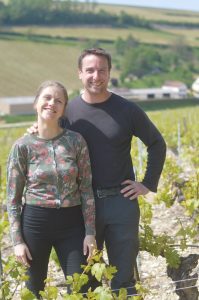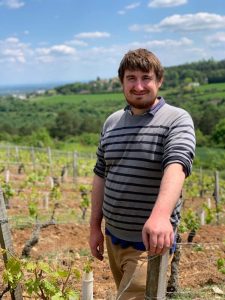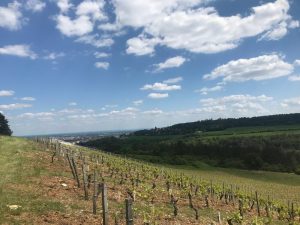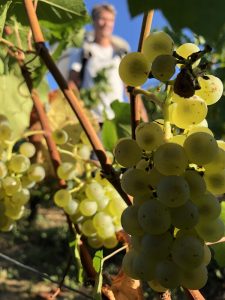Regions We Love : Off the Beaten Path Burgundy
It’s no secret that wine drinkers everywhere can’t get enough of Burgundy. The region has become synonymous with top-quality juice and world-class producers, beloved by industry and consumers alike. However, with great recognition often comes great demand-- as well as steady price increases. The solution? Looking to lesser-known producers, as well as off the beaten path regions, to find the hidden gems located amongst a sea of gold. Here at Paris Wine Company, we’ve done the hard work for you! We’ve located three of Burgundy’s best kept secrets-- all you have to do is read on.

DOMAINE DE LA CRAS – CÔTEAUX DE DIJON
The vineyard sites surrounding the city of Dijon have never really garnered the attention they deserve. Just a few years ago, the city sought to change that. Dijon purchased a 160 hectare plot of agricultural property called Domaine de la Cras, located just outside the city’s limits. Only eight hectares of this land were dedicated to vines, though an additional 13 were available for planting.
Dijon held an open call to find the perfect candidate to take over the property’s winemaking duties. However, a few criteria were put in place: all vineyards were to be farmed organically and the chosen vigneron must be interested in hosting the public for educational visits. The last and perhaps most difficult caveat? The young winner had to have zero family ties to viticulture– a rather difficult feat, when dealing with Burgundians.
After much debate, Marc Soyard was chosen as the winning candidate. Soyard would be free to live on-site at the estate and produce, bottle, and sell his own wines. However, he was (and still is) required to pay his ‘rent’ back to the city of Dijon in the form of bottles– 2,000 per year, to be exact. Prior to Domaine de la Cras, Soyard, originally from the Jura, worked for six years as the vineyard manager at Domaine Bizot. He brings the same non-interventionist mentality to his cellar in Dijon.
At Domaine de la Cras, all vineyards are farmed organically and some biodynamic principles are implemented. A percentage of whole clusters are always used in red wine vinification, and fermentations are always executed with natve yeasts. Soyard also enjoys experimenting with various types of oak in his élevage regimen.
Perhaps the most interesting part of Domaine de la Cras is the fact that the estate is the only one permitted to use the Coteaux de Dijon AOC in all of Burgundy. Soyard produces two reds and two whites under this appellation. Fruit for ‘Coteaux’ (red and white) comes from lower elevation sites and ‘Cras’ (red and white) comes from steeper, more exposed plots. These wines, totally different yet thought-provoking in their own right, are not to be missed.
PAUL NICOLLE – VÉZELAY (CHABLIS)
Paul Nicolle is no stranger to our portfolio, however, his new cuvée from Vézélay is definitely worth a mention. Nicole’s estate is located in Fleys, a small village just four kilometers away from the town of Chablis. The winery was created by Robert Nicolle and Josette Laroche exactly 40 years ago, though both hailed from impressive 200-year-old winemaking lineages. Today, the duo’s son Charly is in charge of the estate’s 20 hectares, most of which are centered in the overarching AOC Chablis.
Nicolle’s small-production cuvée from Vézélay is absolutely worth getting to know. Until 2017, the region was simply a sub-appellation of Bourgogne, until finally becoming recognized as its own AOC. Vézélay is located about 100 kilometers northwest of Beaune, specifically within the southern portion of the Grand Auxerrois, which is also home to Irancy and Saint-Bris. The entire appellation of Vézélay is made up of just 66 hectares, most of which are dedicated to Chardonnay and Pinot Noir, though small amounts of Melon de Bourgogne and César are also planted.

PIERRE-HENRI ROUGEOT – ALIGOTÉ, PASSETOUTGRAIN & MORE
We actually discovered the wines of Pierre-Henri Rougeot thanks to our good friend and aforementioned vigneron, Marc Soyard. Rougeot’s winery is situated in the heart of Meursault, though his production goes far beyond just Chardonnay.
Pierre-Henri returned to his family’s estate and took over the winemaking reigns back in 2010. Through it all, Pierre-Henri tends all of his 13 hectares organically and produces all of his wines with a minimal intervention mentality. No sulfur is added throughout the entire winemaking process. Pierre-Henri has described his winemaking mentality as influenced by Burgundian tradition, as well as the natural winemakers of Saumur, Cahors, and more. This is how he believes elegant, honest, and precisely pure final bottles are created.
Aside from Pierre-Henri’s Chardonnay production, he also makes a varietal Aligoté bottling, as well as a Passetoutgrain, both of which are crafted vineyards around the village of Meursault and bottled as single-vineyard cuvées. Aligoté is perhaps one of France’s most underrated and best-kept secrets. As Burgundian Chardonnay prices continue to rise, these crisp and zesty whites made from the region’s lesser-known grape variety are equally thirst-quenching and delicious, often marked by apple-driven flavors and stony, flint-like undertones. Passetoutgrain is another great Burgundian secret. While collectors and aficionados flock to better-known Premier and Grand Cru Pinot Noir appellations, these bottles, produced from a combination of Pinot Noir and Gamay, offer some of the most affordable, thirst-quenching, and tasty red options from the region. Think Côte de Nuits meets Beaujolais– what could be better? And we simply can’t write about Rougeot and off the beaten path Burgundy without mentioning his classically delicious Chardonnay produced from the lesser-known region of Saint-Romain. This wine is made from 80-year-old vines and often sold on the shelf for much less than it should be.
Exploring the world of Burgundy doesn’t always need to break the bank. Looking to up-and-coming producers, off the beaten path producers, or even better, a combination of the two, are surefire ways to ensure a solid bang for your buck– as well as a deeper, delicious ride into all that Burgundy has to offer.







